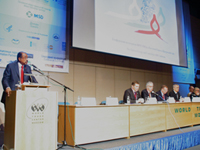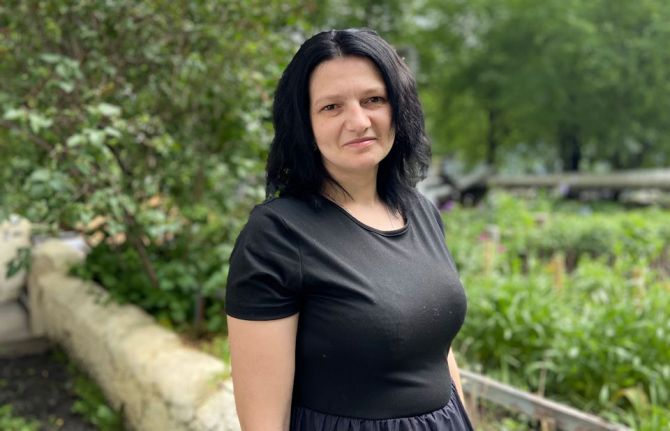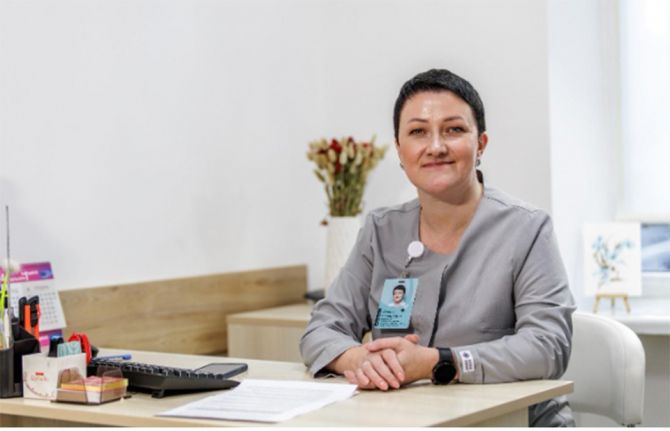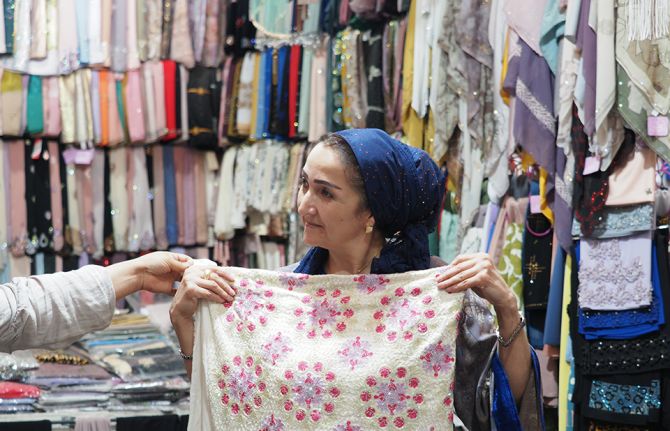
Feature Story
Eastern Europe and Central Asia HIV conference for joint efforts towards Universal Access
27 October 2009
27 October 2009 27 October 2009
Opening plenary of 3rd EECAAC, Moscow, 28 October 2009.
Credit: UNAIDS
The 3rd HIV/AIDS Conference in Eastern Europe and Central Asia opened in Moscow today with a ceremony attended by senior representatives of Russian Duma, Russian Ministry of Foreign Affairs, Russian Academy of Sciences and the US Ambassador to the Russian Federation.
The meeting brings together political leaders, scientists, health professionals, representatives of civil society and religious organizations as well people living with HIV. There are 2500 participants gathered from 60 countries, of whom 58% are women. The conference organizers hope it will invigorate the response to the AIDS epidemic across the region.
Injecting drug use is the main mode of HIV transmission across Eastern Europe and Central Asia. HIV prevention among drug users and their sexual partners is a vital component of an evidence-informed response.
In a plenary session, UNAIDS Executive Director Mr Michel Sidibé gave an overview of global AIDS response and outlined the way forward for achieving universal access goals. The event, which runs in Moscow until 30 October, is based on the theme “Regional cooperation. Join the Efforts for Universal Access”.
UNAIDS is very concerned that Eastern Europe and Central Asia is the only region of the world where HIV prevalence clearly remains on the rise.
Michel Sidibé. UNAIDS Executive Director
In his address, Mr Sidibé said that there has been tremendous progress in the region with many countries set to achieve universal access target goals. But the UNAIDS head also noted that the AIDS epidemic continues to outpace the response as the estimated number of adults and children living with HIV in the Eastern Europe and Central Asia region has doubled since 2001. Nearly 1.5 million people are living with HIV and the majority of them live in Russia and Ukraine.
“UNAIDS is very concerned that Eastern Europe and Central Asia is the only region of the world where HIV prevalence clearly remains on the rise,” said Mr Sidibé.
“In this region, non-governmental organizations have implemented some of the best services for prevention, treatment and support in the world. In several countries of the region, harm reduction programmes are driven by civil society and we are seeing the first signs of their impact on the epidemic. I encourage the governments of this region to sustain and scale-up programmes delivered by civil society.,” continued Mr Sidibé.

Credit: EECAAC
In the session, Mr Sidibé also highlighted some of the accomplishments that have been achieved in the region, such as the coverage of prevention of mother-to-child HIV transmission programmes that exceeds 95%, hoping that the region would be the first to eliminate HIV transmission from mother to child by 2015.
The Russian federal authorities with support from UNAIDS, The Global Fund to Fight AIDS, Tuberculosis and Malaria, and the International AIDS Society have organised the event. The organising committee is chaired by G.G. Onishchenko, Head of Russian the Federal Service for the Protection of Consumers Rights and Human Wellbeing, and the country’s Chief Sanitary Physician. The conference, first held in 2006, has traditionally been hosted in Moscow and is the leading public forum for dialogue on public health and HIV in the region.
This year’s conference aims to set priorities for the region, with special emphasis on HIV prevention among key groups, including sex workers and people who inject drugs, while taking into consideration the nature of the epidemic in each country across Eastern Europe and Central Asia.
HIV epidemic in Eastern Europe and Central Asia
According to the 2008 UNAIDS report on the global AIDS epidemic, about 1.5 million people were estimated to be living with HIV in Eastern Europe and Central Asia in 2007; almost 90% of them living in either the Russian Federation or Ukraine.
Although HIV epidemic in the Russian Federation is the largest in the region, there are rising numbers in Azerbaijan, Georgia, Kazakhstan, Kyrgyzstan, the Republic of Moldova, Tajikistan, and Uzbekistan.
There is increasing political and financial commitment for HIV prevention, treatment and care in Russia, even in the face of a global financial crisis, with the country set to increase the number of people on antiretroviral treatment by 50,000 in 2009.
Eastern Europe and Central Asia HIV conference fo
Partners:
Global Fund to Fight AIDS, Tuberculosis and Malaria
International AIDS Society
Press centre:
AIDS threat growing throughout Europe: UN, World Bank and Global Fund call on European Ministers to scale up HIV prevention and treatment programmes
Global Fund and UNAIDS Call for Rapid Scaleup of Efforts to Combat AIDS
Speeches:
Multimedia:
Feature stories:
Eastern Europe and Central Asia : News archive
Towards Universal Access in Eastern Europe and Central Asia: Delivering on AIDS today and in the longer term (14 April 2008)
External links:
Visit the official web site of the conference
Publications:
HIV prevalence (%) in adults in Eastern Europe and Central Asia, 2007



